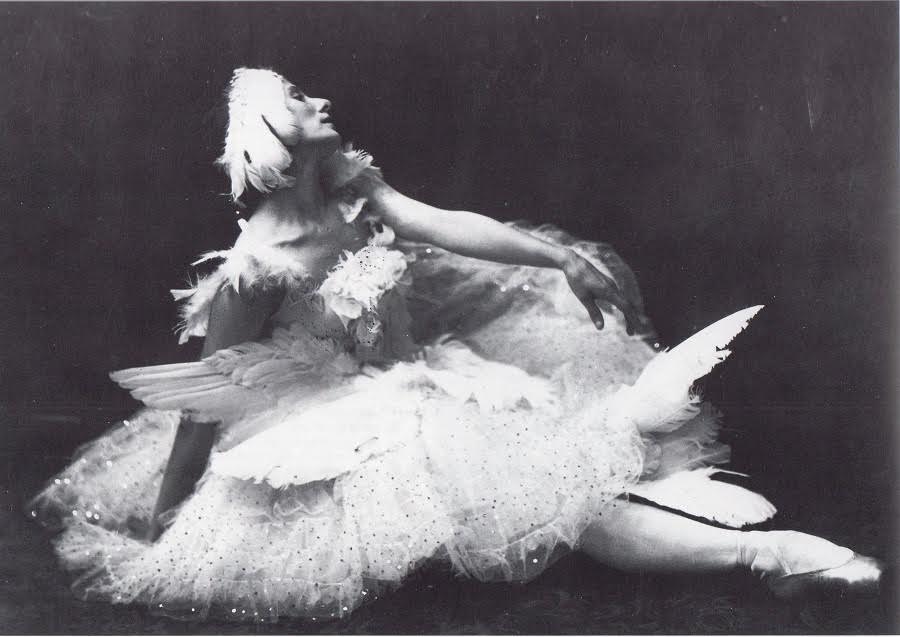The Dying Swan, or “The Swan.”
Fokin, who started choreographing in 1905 after having a career as a dancer, chose the thirteenth movement from Camille Saint-Saëns’s The Carnival of Animals (1886), which was originally composed for a cello and two pianos. Fokin and Pavlova, the legend has it, worked in Fokine’s apartment in St Petersburg during one evening. By all counts, The Dying Swan has remained a stunning example of their inspirational improvisation, in which the choreographer, who sought an innovative approach to the codified classical vocabulary, and the ballerina, with her unusually elongated, limpid body and expressive arms, found an almost ideal collaborative attunement to each other.
It is often said that the fixed choreography for The Dying Swan does not exist because of Fokine’s invention of the holistic movement of the upper body in relation to the exhausting, anxious pas de bourrées suivi of the legs. It allowed every ballerina undertaking this role to bring her own interpretative details to the poetic depiction of the swan facing the death. This interpretive freedom is perhaps the most beguiling attribute of the legacy of Fokin’s and Pavlova (who is rightly considered a co-creator). This short piece quickly become a staple in the repertoire of the grand ballerinas of the twentieth and the twenty-first centuries.Pavlova alone danced it about 4000 times for different audiences thorough the world.This dance is a choreographic poem without a plot but suggestive of a welter of feelings coming from the soul of a ballerina resenting the idea of death and the finality of life as she transforms herself into a fragile image of a swan.
Although the image of the Princess-Swan already became dominant through the Petipa-Ivanov Swan Lake by Tchaikovsky, Fokin’s choreography should be understood not as an extension but rather as a negation of the traditional choreography of the Imperial Theaters, and particularly, that of Petipa. Contemporary ballerinas and stage directors often fuse these two different images of swans—from Swan Lake and The Dying Swan—bytransposing the abstract despair of the Dying Swan into a narrative ballet of the nineteenth-century.
It is often suggested that Alfred Lord Tennyson’s poem “The Dying Swan” inspired both Saint-Saëns’s movement and Fokin’s balletic animation of it. Tennyson was wildly popular in Russia at the end of the nineteenth century due to excellent translations, which could have been read in Pavlova’s and Fokin’s circles. It is less well known, however, that Konstantin Balmont, one the most celebrated poets of the Silver Age of Russian literature, wrote his own poem, “The Dying Swan,” which was inspired by Tennyson. Balmont was one of the most widely read poets of Pavlova and Fokin’s youth. One iteration of Anna Pavlova’s dancing of The Dying Swan survives in a silent movie filmed in Los Angeles in 1924.
Mikhail Fokin made the notation of his choreography in 1935 and supplied this notation with 36 photographs of different poses of the swan performed by Vera Fokina, his wife.
In 1997 during its performances at the Coliseum in London, the Kirov (Mariinsky) Ballet presented two versions of The Dying Swan in two consecutive evenings. The Russian version, which was preserved in the theatre and passed from generation to generation by active performers, exemplified the Russian tradition. The other was the “original” version, which was reconstructed by Isabel Fokine, Michail Fokin’s granddaughter, according to the family archives. The two versions, which differed somewhat in steps but mostly in the interpretation of the theme, sparked adamant debates on the originality andinterpretations, on the shared authorship between the choreographer and the dancer, and on the possibilities of historical reconstructions of dance in general.



